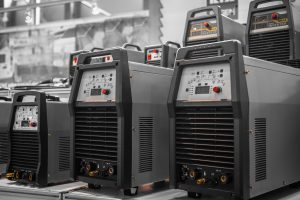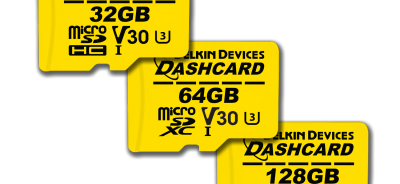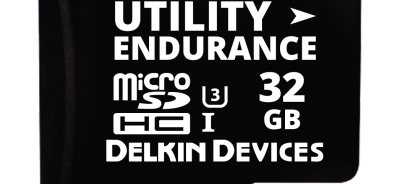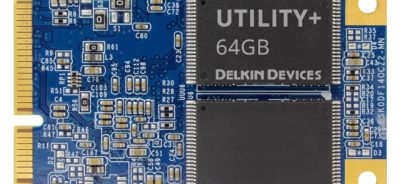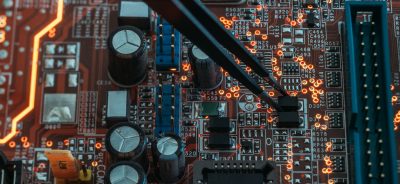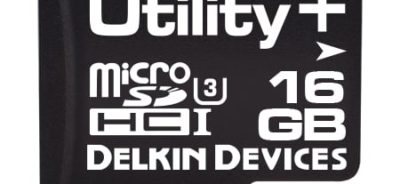The Use of Commercial MLC SD Cards in Battery Management Systems (BMS)
General
This paper will describe the use of SD Cards in Battery Management Systems (BMS). This is not intended to be a thorough tutorial on BMS.
Battery Management (BM)
One might ask, why do batteries need BM? That is a valid question. With the advent of Lithium Ion Batteries, used in industrial applications from portable electronics, to automotive, are becoming a very strict requirement. There are a number of reasons for this, from safety (Literally protecting from catastrophic events) and product endurance to battery life (which affects product cost and reliability).
Battery Basics
A battery is just a battery, right? Not so fast. There are many different types of batteries from the lead acid battery in your car to lithium batteries used in cell phones, lap tops, music players, and electric cars, to alkaline batteries used in toys. All have different characteristics and need to be treated properly. We are addressing chargeable batteries here. Chargeable lithium batteries are by far the most used today and need to be treated with respect. Not doing so can cause anything to very short life to fire and explosions, causing injury and death.
When we speak of lithium batteries, we are addressing what we call a battery pack. Battery packs consists of one or more lithium cells in parallel, series or both. Some battery backs include some rudimentary form of BM built in. In devices such as cell phones and music streamers, the device itself includes a BMS. One may recall the issue with certain cell phones exploding and/or catching fire (I believe in someone’s pocket, and one under a pillow). Also a very expensive electric car catching fire more than once, killing it occupants. Could it be a bug in the BMS? Very likely. Even an overheating cell should be caught.
Lithium Ion Battery Cell Characteristics
The advantages of using lithium ion batteries is high cell voltage. 3.6V – 3.7V. Manufacturing tolerances can go as high as 3.85V
For a 3.6V cell, falling below 2.8V can shorten life of the cell, and rising above 4.2V can cause overheating and maybe even an explosion. The table below shows some characteristic of a nominal 3.6V cell.
3.6V
Lithium-ion
| Nominal cell voltage | Typical end-of-discharge | Max charge voltage | |
| 3.6V | 2.8–3.0V | 4.2V | |
| 3.7V | 2.8–3.0V | 4.2V | |
| 3.8V | 2.8–3.0V | 4.35V | |
| 3.85V | 2.8–3.0V | 4.4V |
One can see that there is not much room for error when managing lithium cells. 50Mv over the maximum cell voltage can be catastrophic, and 50mv under can shorten the life or destroy the cell. So deep discharge is not an option and the load must be removed when the thresholds are reached. This is not a simple thing to deal with. Companies have been formed that do nothing but design and make BMS for large applications. ICs are available for smaller applications.
What you don’t see in the table is cell temperature, which is very critical. This must be managed as well.
Lithium Ion Batteries and Battery Packs
We discussed lithium ion cells. A battery or battery pack is usually made up of 3.6V cells in series or series/parallel. So, a 12V battery might use 3 or 4 3.6V nominal cells. Fully charged this would be 14.8 Volts. End of discharge or needing recharge 12.0V. For systems needing an actual 12.0 V supply a low dropout regulator is used in the system. A 48V battery would have up to 16 cells.
We can now see that this starts to get complicated to manage. Remember each cell needs to be monitored. There is a stage in the charge process called cell balancing, which ensures cells retain equal charge voltage. In large expensive systems, such as those installed in electric cars, it becomes required to log battery management data and store it reliably, permanently and independently of other subsystems. The BMS is a submodule in a system and communicates with other sub modules but must key its own log battery events. This is for battery warranty, insurance purposes and host of other reasons.
In order to monitor each cell, wires need to be brought out for each cell so that the cell parameters can be monitored. Cell temperatures are monitored as well.
The charging procedures for single Li-ion cells, and complete Li-ion batteries, are slightly different.
A single Li-ion cell is charged in two stages:
- Constant Current (CC)
- Constant Voltage (CV)
A Li-ion battery (a set of Li-ion cells in series) is charged in three stages:
- Constant Current (CC)
- Cell Balance (Not required once a battery is balanced)
- Constant Voltage
During the constant current phase, the charger applies a constant current to the battery at a steadily increasing voltage, until the voltage limit per cell is reached (4.2V).
During the balance phase, the charger reduces the charging current (or cycles the charging on and off to reduce the average current) while the State of Charge (SOC) of individual cells is brought to the same level by a balancing circuit, until the battery is balanced. Some fast chargers skip this stage. Some chargers accomplish the balance by charging each cell independently.
During the constant voltage phase, the charger applies a voltage equal to the maximum cell voltage times the number of cells in series to the battery, as the current gradually declines towards 0, until the current is below a set threshold of about 3% of initial constant charge current.
Periodic topping charge about once per 500 hours. Top charging is recommended to be initiated when voltage goes below 4.05 V/cell.
Failure to follow current and voltage limitations can result in an explosion.
Battery Parameters the BMS Can Save
The best BMS are modular consisting of modules inter-connected to each other (Example):
Central Control Unit- Overall BMS control and data storage to an SD card.
Power Control Unit- Contains the Battery Charger and the Battery management algorithms. Connects and disconnects the load from the battery charger. Limit inrush current (Especially from bulk filtering capacitors).
Cell Monitoring Module- Monitors the individual cells voltage, temperature, state of charge.
This information is passed back to the Control Unit and logged to the SD card.
A BMS may monitor the state of the battery as represented by various items, such as:
- Voltage: total voltage, voltages of individual cells, minimum and maximum cell voltage or voltage of periodic taps
- Temperature: average temperature, coolant intake temperature, coolant output temperature, or temperatures of individual cells
- State of Charge (SOC) or Dept of Discharge (DOD), to indicate the charge level of the battery
- State of Health (SOH), a variously-defined measurement of the remaining capacity of the battery as % of the original capacity
- State of Power (SOP), the amount of power available for a defined time interval given the current power usage, temperature and other conditions
- Coolant flow: for air or fluid cooled batteries
- Current: current in or out of the battery
Electric Vehicle Systems: Energy Recovery
- The BMS will also control the recharging of the battery by redirecting the recovered energy (i.e.- from regenerative braking) back into the battery pack (typically composed of a few batteries, each composed of a few cells).
Computational Parameters
Additionally, a BMS may calculate values based on the above items, such as:
- Maximum charge current as a Charge Current Limit (CCL)
- Maximum discharge current as a Discharge Current (DCL)
- Energy [kWh] delivered since last charge or charge cycle
- Internal impedance of a cell (to determine open circuit voltage)
- Charge [Ah] delivered or stored (sometimes this feature is called Coulomb counter)
- Total energy delivered since first use
- Total operating time since first use
- Total number of cycles
Conclusion
BMS are complicated and necessary when using Lithium ION batteries. Kind of like a flight recorder in aircraft. Logging of data in real time is necessary, in light of system failures, explosions, expensive battery warranties etc. A good way to do this is via a commercial MLC SD card, which are reliable and can be had in very high densities. As part of a separate subsystem, data can be recovered even if the rest of the system is non-operative.
Contact
Article Contributor:
Carmine C. Cupani, MSEE
CTech Electronics LLC
 Login
Login Register
Register


